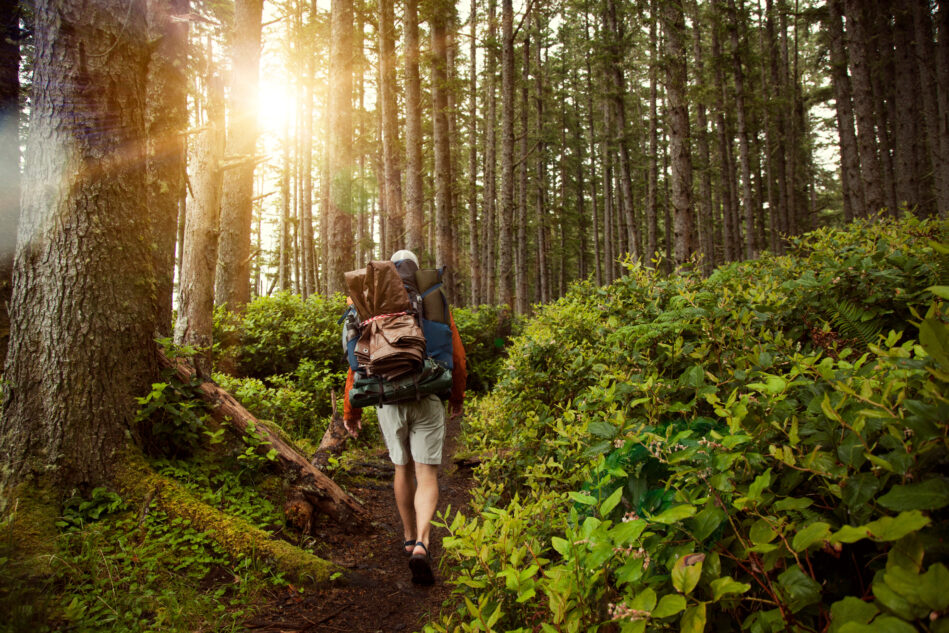Love the idea of getting more exercise outside, but not sure where to start?
Exercising outside benefits us in more ways than one. The sunlight can help regulate your circadian rhythm, making waking up in the morning and falling asleep at night easier. The sights, sounds and smells of nature can calm our bodies and even provide health benefits like lower blood pressure.
Before your step onto a trail or pedal into a bike lane, it’s crucial to know the basics of staying safe. We’ve rounded up apps and guides to help you whether you want to go hiking, biking or swimming. And, remember, before stepping outdoors, always remember to slather the sunscreen on.
Hiking
Before you even choose a trail, make sure you have everything you need to hike safely. You should wear comfortable shoes with a strong grip on the soles and ankle support and thick socks and have in tow a bottle of water. Depending on where you’re hiking and for how long, you may need bug, or even bear spray and, of course, snacks to keep your energy from flagging. Make sure you research the location and trail you’re traveling beforehand. Hiking with a group is another good way to help you stay safe.
Two useful websites with apps that can help you find and map a trail and prepare for your hike are AllTrails and Hiking Project. Information on the apps spells out the length of different trails, their difficulty and if it’s wise to bring along children or pets. Also, on the apps are reviews and photos from other hikers who have visited different locales.
Know that when you’re on a trail, you’re unlikely to have reliable WiFi or a cellular signal. Find out, too, if any app you’re using offers maps offline to help guide you should the GPS fail.
Cycling
If you like to move a little faster, biking, that is, cycling, may be for you. Biking etiquette is extremely important, as road bikers share the street with cars, and mountain bikers pedal the trails alongside hikers and runners. Before you head outside, make sure to study the rules of the road and trails for cyclists. And please, wear a helmet every time you get on a bike. Gloves for cyclists are useful, too. If you break a fall with a palm, with gloves on, the skin is less likely to be damaged.
Colliding with a car is often deadly for the cyclist, so ride defensively, stay in a bike lane if possible, follow the laws for moving vehicles. Also, wear high-visibility gear, so motorists will be able to see you. In most cities, cyclists have to stop for red lights and yield to pedestrians just as cars do.
According to statistics from helmets.org, 97% of cyclists killed in accidents were not wearing helmets, and only one was killed during a collision while riding in the designated bike lane.
When it comes to biking on the trails, alertness and control are key. Make sure you ride at a speed you can easily control, let others on the trail know you’re coming and use caution when pedaling around turns. Always yield to pedestrians or others using the trail. If you’re headed downhill and another rider is facing you uphill, a good rule of thumb is that the downhill rider should yield to the uphill rider. When in doubt, the safest choice always is to yield, since you can’t know whether the other individual will behave with safety in mind.
If you’re a mountain biker, consider looking for a local mountain-biking club on the mountain-biking project website or asking at your local bike shops if they host group rides.
If you’re ready to head out, try the komoot website or app to plan a route. Using either, you can discover road or trail paths other riders have taken or use the interactive map to plan your own. If you love to monitor such metrics as your riding pace, consider Strava, a popular social app that allows route building and tracking for running and biking.
Swimming
Swimming can be one of the best full-body workouts. It gets the heart pumping and protects joints from the impact damage that running can cause. However, finding available pools or lakes and ensuring proper technique can be a challenge, so keep looking. Resources for local public pools are the Swimmer’s Guide, the YMCA, the U.S. Masters Swimming group and the Red Cross.
If you’re a beginner, lessons, available through many organizations, can offer training and a refresher on strokes.
If you like structured workouts with a team, consider joining the local U.S. Masters Swimming group.
Some swimmers love to venture into open water in nearby lakes or oceans. Before doing so, learn and practice open-water swimming safety. It’s best not to swim alone, so consider finding a group for your swim through the U.S. Master’s Swimming or asking at your local swim shop.
Exercising outside has many benefits. The sights, sounds and smells of nature can calm your body and even provide health benefits like lower blood pressure. If you’re not sure you want to hike, bike or swim, check out our article, “Outdoor Workouts, When You Don’t Feel Like Running,” which offers other suggestions for other outdoor activities.






